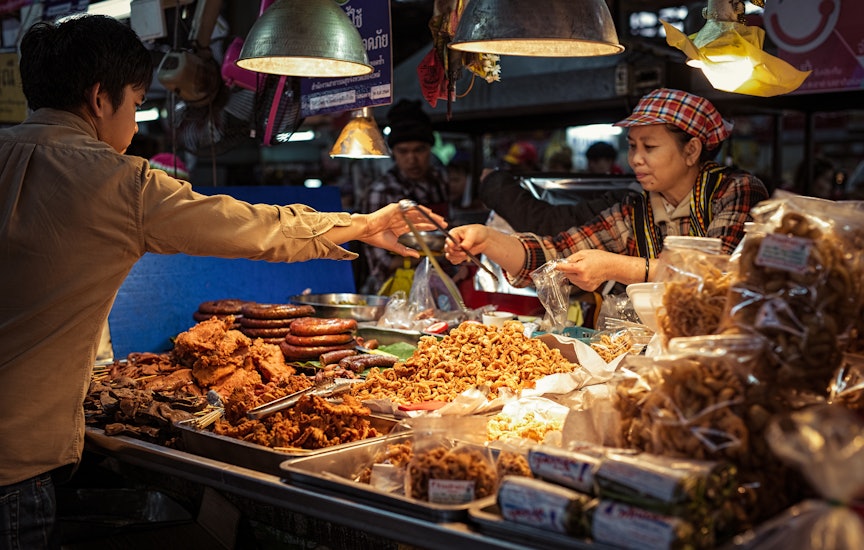
How a street dog from Grand Bahama saved my travel writing career

Sep 26, 2019 • 7 min read

Bobbi helped Becca learn to cope with the panic attacks she suffered as a travel writer © Becca Blond / Lonely Planet
I was on a guidebook research project in Thailand when the panic attack hit. My heart began racing. I started to sweat. An overwhelming sense of doom invaded my thoughts. I was immobilized on my backpacker bunk in Bangkok, unable to get to work. The ceiling fan above whirled indifferently.
Through a thick fog, a voice inside my head compelled me to get up. But I couldn’t move. Time was slipping by. Time I needed to work.
I’ve suffered from panic attacks all my life, but this was one of the first times it had begun to disrupt my work.

In Thailand, the panic attack eventually passed, and I was able to finish the project. Returning home, I was able to get my general anxiety mostly under control with medication, some talk therapy, and the help of a very talented physician, Dr. Sean O’Donnell. The panic attacks continued – sometimes they came out of nowhere, but they were often triggered by airplane flights.
And as a travel writer, airplane travel wasn’t exactly an activity I could avoid. I started turning down work because I was too terrified to squeeze into an economy seat.
And then I met a black-and-white potcake mix named Bobbi (“potcake” is the general name for street dogs in the Bahamas and Turks and Caicos). And my entire world changed.

I wasn’t looking for a dog at the time. I already had one – Duke, who was a 100lb rescue pit bull with some self esteem issues of his own, but my boyfriend saw Bobbi on an adoption website and insisted we meet her. We discovered the woman fostering Bobbi was in the process of moving and needed to find a new couch for this pup to crash on. I agreed to take over fostering. With her wide, panting face always seemingly smiling from ear to ear, Bobbi was instantly lovable. It only took a few days to make her a forever family offer.
Bobbi's beginnings
Bobbi was born on Grand Bahama in the Caribbean sometime around 2010. Barely a year old, she was picked up as a stray and taken to the Humane Society of Grand Bahama. She was emaciated and had a distended abdomen. She was missing most of her fur and appeared to have recently had puppies. Someone had also cropped her ears in an attempt to make her look more like a pit bull. Her vet in Colorado later told me it looked like they had been chopped off by hand.
But despite all this trauma, Bobbi appeared to hold no grudges. She loved all people and dogs and had the calmest demeanor of any pup I’d ever met. Nothing fazed her. She was also beyond empathetic and strangely intuitive. Just being around her made me feel calm.

Bobbi and I started spending a lot of time together, and I would usually take her with me when I ran errands. One day while at a routine check-up with Dr. O’Donnell, I had a panic attack and my blood pressure shot up to the hypertensive crisis level. Bobbi was waiting in the lobby with my boyfriend and Dr. O’Donnell suggested I go get her. Maybe she could help calm me down.
Just sitting next to Bobbi, petting her, I felt my panic start to fade. Bobbi offered me her paw. I took it and clenched. She didn’t mind and didn’t try to pull it back. Instead she just gave me soft little kisses on the arm. Within 5 minutes my blood pressure was back to normal and I felt almost relaxed.
Dr. O’Donnell decided I needed to start traveling with Bobbi as an Emotional Support Animal. Dr. O’Donnell wrote me a letter and sent us on our way. But we left with more questions than answers: at around 60lbs I wasn’t sure how Bobbi would fit on a plane, let alone how she would handle the chaos of the airport. But I was willing to give it a try.
The making of an emotional support animal
Turns out Bobbi didn’t just tolerate flying – she absolutely loved it. She’s never happier than when she is waiting in line at a TSA checkpoint. She relishes clearing the metal detector on her own and sitting for a pat-down. She lives for riding escalators in crowds. She doesn’t mind squishing herself under a basic economy seat and lying still for hours. She enjoys clearing customs both in the US and abroad. She digs the praise she gets from the flight attendants after a flight. Sometimes she befriends pilots and gets invited into the cockpit for a selfie.

At first I thought Bobbi was just a good distraction. I got so excited about the pure joy flying in basic economy class gave her that I forgot to panic. It lasted a few flights this way. And then, bam, out of nowhere I had one right after clearing security with Bobbi. It was hard to breathe and my head started to get fuzzy, so I tugged at Bobbi’s leash to find somewhere to sit down. I didn’t have to pull. She was already leading me. When I sat she leaned up against me and gave me her paw again and the reassuring kisses.
Not long after, I realized Bobbi could sense a panic attack coming on even before I could. I would realize the typical signs of a panic attack – racing heart, sense of dread – and she’d be sitting at my feet waiting with her paw. Sometimes she would bark at me a few minutes before the heart racing began. And if I take my medicine before the panic hits full-on it tends to actually work to stop it. Or at least mute it. If I could train her to consistently alert me then maybe I wouldn’t have to feel like I dying every time a panic attack rolled in.
I started training her to become a medical assistance service dog. Besides consistently alerting me before a panic attack, Bobbi also had to learn to ignore other people in public situations when working. She also learned to clear airport security on her own, to sit quietly for a TSA pat down (which she actually loves) and to slide herself under an airline seat and not move for the duration of the flight.
Soon we were traveling together as a team.

Suddenly I loved my job again. I could commit to trips with multiple flights because I knew I wouldn’t arrive exhausted and flooded with cortisol from a bad panic attack. These days Bobbi flies with me about once a month.
Bobbi can’t go everywhere with me because she has some health issues of her own, including a chronic tick-born illness, Ehrlichia, that she contracted while living in Grand Bahama. So we don’t go anywhere together where we can’t access quality vet care easily.
For those trips alone I deal with the panic attacks (that usually occur when flying) the way I did before Bobbi — I have a prescription anti-anxiety drug I can take to help calm down, it just makes me very drowsy. I also try to close my eyes and imagine Bobbi is at my feet, although this doesn’t work as well. I know this disorder is a part of my life and sadly will continue after Bobbi is no longer with me. But Bobbi has taught me ways to manage my anxiety, and she’s taught me to love my job again.
Hurricane Dorian hits Grand Bahama
There’s a sad coda to this story: when Hurricane Dorian, the strongest hurricane to ever make landfall in the Bahamas, slammed into Grand Bahama on September 2, the Humane Society of Grand Bahama suffered a direct hit. Five staff members and one volunteer rode out the storm inside the shelter, alongside about 190 dogs and 85 cats – many of which were strays but some were pets that had been brought in by owners for safety during the storm.
The Category 5 hurricane parked itself over the island for more than 36 hours and the shelter flooded. Slowly at first, but then the water started rising fast.
The staff scrambled to save as many dogs and cats as they could — opening kennels and trying to move animals to higher spaces. But the water soon reached their necks and they had to escape to save themselves.
They hid in an attic crawl space for hours before eventually swimming out to safety. Sadly almost half of the dogs and 7 cats were killed. But after a massive rescue effort the surviving dogs and cats were evacuated to the US on charter flights on September 11 and 13.
You can read more about the Humane Society of Grand Bahama rebuild through their US-based 501c3, the Kohn Foundation.















